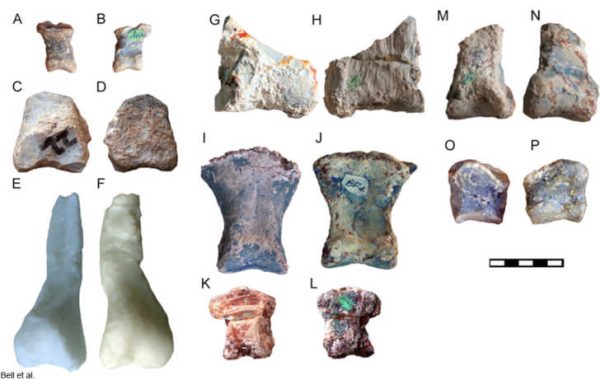Gemstones have long held a fascination for their beauty and rarity, but what if they could offer a glimpse into the ancient past? In an opal mine near Lightning Ridge in Australia, a remarkable find was made back in the 1980s a collection of fossils preserved within opals. Recent analysis of these opalized fossils has revealed that they belong to a herd of dinosaurs, including the most complete opalized dinosaur ever discovered.

Among the fossils was evidence of a previously unknown dinosaur species, now named Fostoria dhimbangunmal in honor of the miner, Robert Foster, who unearthed them decades ago. The name, translating to “sheep yard” in local languages, pays tribute to the opal field where the bones were found, known as “Sheepyard.”
While the fossils lay dormant for years, they were eventually donated to the Australian Opal Center by Foster’s children, where they caught the attention of scientists at the University of New England in Armidale.

Leading the analysis, Phil Bell, a senior lecturer of paleontology, pieced together remnants from four Fostoria skeletons. These ranged from juveniles to larger adults, indicating a herd or family group.
Bell speculated that the herbivorous dinosaurs relied on safety in numbers for protection, lacking sharp claws or horns. This newfound species, related to the ornithopod dinosaur Muttaburrasaurus, provided subtle but crucial insights into dinosaur evolution and behavior.

The special nature of opalized fossils was further highlighted by the discovery of another dinosaur, Weewarrasaurus pobeni, in Lightning Ridge the previous year. Both species resided in this region during the Cretaceous period when it was a floodplain.
While most opalized fossils in the area originated from marine creatures, the occasional land animal bone would be swept to sea and interact with silica minerals, forming opalized replicas. According to Bell, Lightning Ridge remains a treasure trove of opalized dinosaur fossils, with ongoing discoveries shedding light on prehistoric life.
However, accessing these buried fossilized opals presents a challenge, requiring the expertise of miners whose work is vital for uncovering these ancient marvels. Bell emphasized the crucial role of miners in unraveling the mysteries of the prehistoric world hidden within Lightning Ridge.
As the opal industry continues to flourish in the region, the prospect of unearthing more opalized dinosaur fossils sparkles with the promise of revealing further secrets of the past.





